Birdfinding.info ⇒ Easy to find at Maricao State Forest and generally common elsewhere in the interior of western Puerto Rico, including Río Abajo State Forest. In the east, it is most common south of Caguas in Carite State Forest. Closer to San Juan, it can often be found in El Yunque National Forest—most conveniently at La Coca Falls.
Green Mango
Anthracothorax viridis
Endemic to Puerto Rico, where it is a common resident of humid woodlands in the western hill country and mountains, especially at higher elevations. Uncommon and local in the east and at lower elevations.
Identification
A medium-sized hummingbird with a long, decurved bill. Green overall, with a bluish-green throat and blue-black tail. The sexes are similar.

Green Mango. (Utuado, Puerto Rico; March 21, 2017.) © Frédéric Pelsy
Two other species of similar size and shape also occur on Puerto Rico—Puerto Rican Mango and Green-throated Carib—but they usually occupy lower elevations and drier habitat than Green Mango.
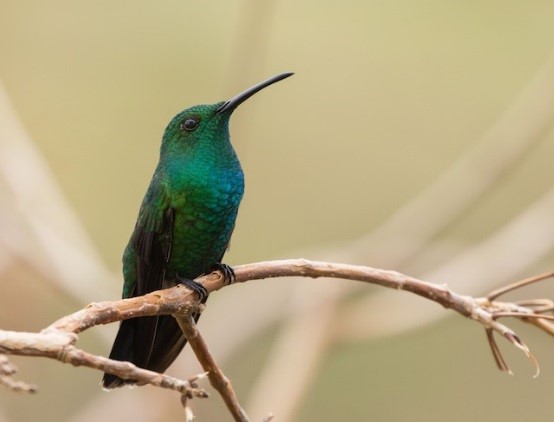
Green Mango, showing a notable resemblance to Green-throated Carib due to bluish tint on the chest. (Rancho Vegas, Cayey, Puerto Rico; September 30, 2017.) © José Santiago
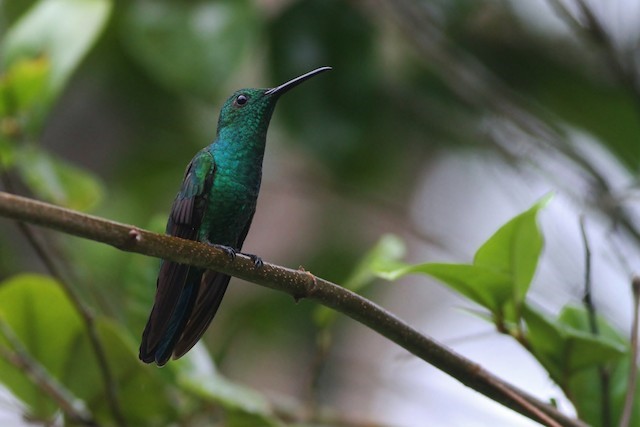
Green Mango. (Utuado, Puerto Rico; March 21, 2017.) © Alex Lamoreaux
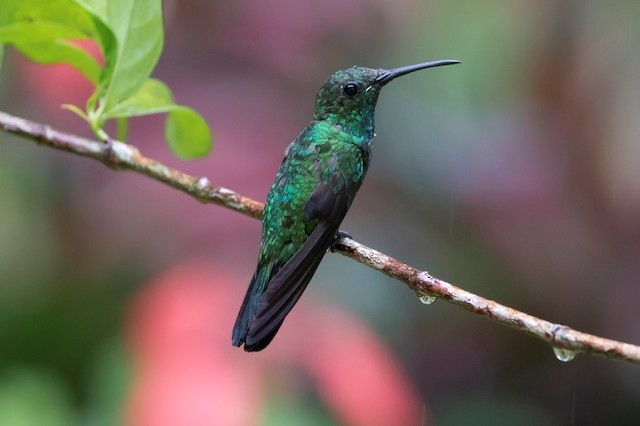
Green Mango. (Utuado, Puerto Rico; May 26, 2017.) © Michael Todd

Green Mango. (Utuado, Puerto Rico; March 21, 2017.) © Alex Lamoreaux

Green Mango. (Rancho Vegas, Cayey, Puerto Rico; June 7, 2018.) © José Santiago
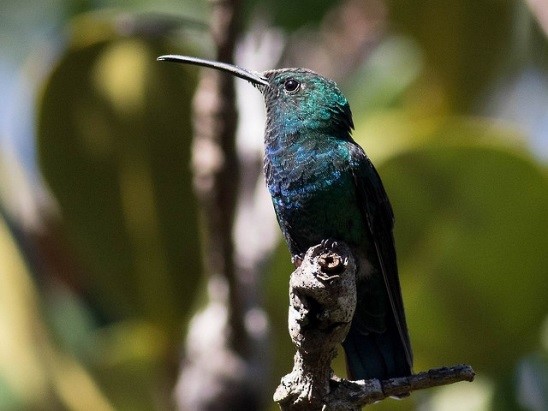
Green Mango, appearing dark blue-green in this lighting. (Maricao State Forest, Puerto Rico; March 18, 2016.) © Matthew Sabatine
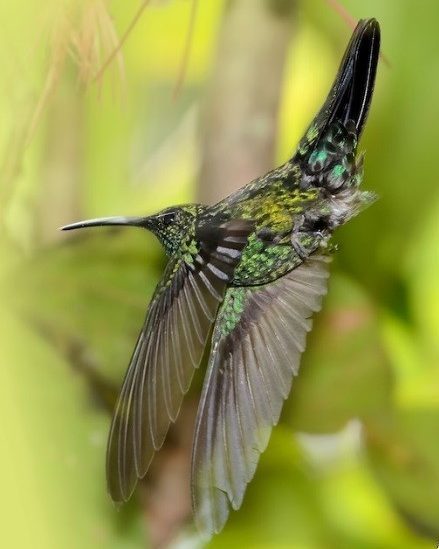
Green Mango, showing highly unusual, pale-speckled, glittery coloration in this remarkable photo. (Maricao State Forest, Puerto Rico; May 24, 2017.) © Benny Diaz
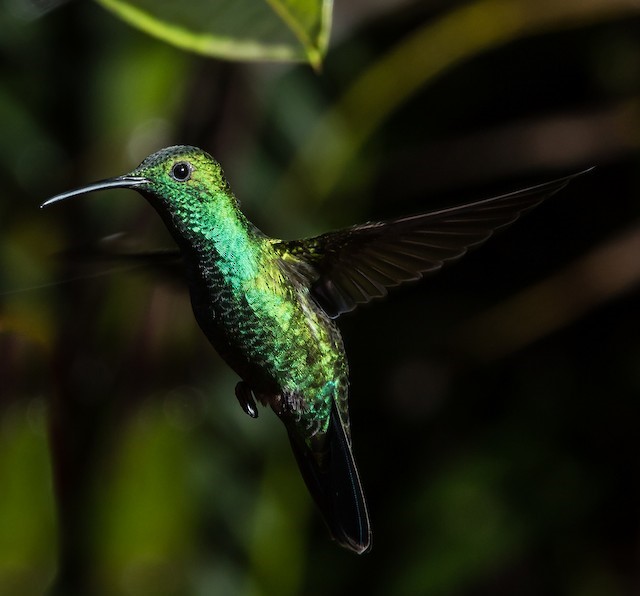
Green Mango. (Rancho Vegas, Cayey, Puerto Rico; August 27, 2017.) © José Santiago
Voice. Common calls are high-pitched trills, rapid but varying in speed:
Cf. Puerto Rican Mango. Green and Puerto Rican Mangoes overlap mainly in the interior hill country. Green generally prefers more humid habitats at higher elevations. They are not difficult to distinguish if seen well, as both sexes of Green Mango are a rich shade of green above and below and have a solid blue-black tail.
Under suboptimal viewing conditions, male Puerto Rican can be mistaken for Green Mango. On the underparts, Puerto Rican typically shows variable shading—darkest on the chest and pale on the lower belly.
Cf. Green-throated Carib. Under some conditions, Green-throated Carib and Green Mango can appear very similar. They regularly occur within a few miles of each other in eastern Puerto Rico, but are rarely found at the same locations due to their differing habitat preferences—with the mango occupying more humid habitats at higher elevations.
The carib has a more strongly curved bill and usually shows distinctive color contrasts on the underparts: bright green on the throat and upper breast, a bluish breastband, blue-green rump, and blackish lower breast and belly. However, these contrasts can be inconspicuous at times and Green Mango sometimes also shows bluish highlights and a dark belly.
Notes
Monotypic species.
References
eBird. 2019. eBird: An online database of bird distribution and abundance. Cornell Lab of Ornithology, Ithaca, N.Y. http://www.ebird.org. (Accessed April 25, 2019.)
Fogden, M., M. Taylor, and S.L. Williamson. 2014. Hummingbirds: A Life-size Guide to Every Species. HarperCollins, New York.
Raffaele, H. 1989. A Guide to the Birds of Puerto Rico and the Virgin Islands. Princeton University Press, Princeton, N.J.
Raffaele, H., J. Wiley, O. Garrido, A. Keith, and J. Raffaele. 1998. A Guide to the Birds of the West Indies. Princeton University Press, Princeton, N.J.
